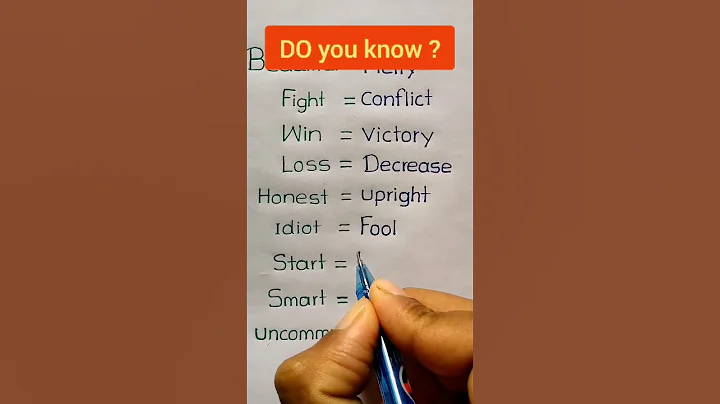Senior High School Exam Physics|Induction and breakthrough of the important and difficult points of optics topics, necessary for the preparation stage to improve
The test center of the physics optics part of the high school entrance examination is in the middle school entrance examination physics. The application is the test point, mainly including the linear propagation of light, reflection and refraction law , plane mirror imaging and so on. These parts are more focused on the mastery of the principles and the investigation of the drawing, so when you review, you must do a good job of combing the knowledge and summing up the methods.

For the above test sites, as long as everyone combs the content of the test sites comprehensively, and then develops the map centered on the experiment. If there is no problem, then basically it will not be lost in the test. point. The other part is the lens and its function. We will give you a detailed explanation in the next topic, which is another important and difficult point of optics.
The explanation of the important and difficult points of optics is a suggestion that Mr. Tang will give to students in the learning stage or review stage. In the optical part with many knowledge points, it seems that the knowledge points are relatively simple, but in the process of investigation, there are still more parts that are prone to errors, and it is difficult for many students to understand the true intentions from the knowledge points. And have a deep understanding of the important and difficult points of each part, which will more or less have a certain impact on the follow-up study, so Teacher Tang concentrated on explaining it to everyone.

1. The principle of optical imaging
The principle of optical imaging is formed by the propagation of light along a straight line. Its representative application is the formation of shadows,Small hole imaging and reflection of light imaging, etc. Among them, small hole imaging and light reflection imaging are the main ones. The most representative.
First, the small hole is imaged.
Small hole imaging is actually a certain position on the object, there will be countless rays of light, and spread along a straight line, and then through the small hole and then form the corresponding point on the bottle. When these points are concentrated, they are the same as the image of the object. It's just that what he formed is like an upside-down real image. Regardless of the shape of the small hole, the effect on the formation of the object has nothing to do with the shape of the small hole.

Secondly, light reflection imaging. The most representative example is looking in the mirror. When we stand in front of the mirror, in fact, behind the mirror, a virtual image that is standing upright is formed. The distance from us to the mirror is the distance from the virtual image to the mirror. For light reflection imaging, we need to draw the reflection diagram of the light path according to the symmetry of the object image. This is one of the skills that students need to master in the specific mapping.

2. Refraction of light
The refraction of light is when light enters another medium from one medium, or occurs in the same non-uniform medium The phenomenon of oblique shooting. I believe everyone is already very familiar with the mapping of light refraction and the summary of the law of refraction. Here we mainly focus on the phenomenon of light refraction. How to distinguish and distinguish between practical applications in life? This is why everyone does not use physics knowledge flexibly in the learning process.

Through the refraction of light in the picture below,The analysis of the optical path diagram and principle of camera imaging, projector imaging and magnifying glass imaging, I believe everyone has a clearer understanding of the difficulties in this part.

Third, the principle of eye imaging
The reason why the eye can see objects is actually the principle of convex lens imaging. The eyeball is equivalent to a camera. We see that the thicker the thickness of the lens in the eye, the stronger its ability to deflect light. And for near and far objects, the imaging characteristics are also different. When looking at a distant object, the lens becomes thinner, and the light from a distant object is refracted by the lens and then imaged on the retina. The lens will become thicker when there is an object at a distance. At this time, the light from a nearby object will also be refracted by the lens and appear on the retina. This is what we call a timely zoom to adapt to the object when the eye sees different distances.

IV. Imaging analysis of myopia
Myopia is formed because the refractive power of the lens is too large, and the image formed by the object falls in front of the mother retina. The image obtained on the omentum is blurred, not clear. To correct myopia is actually to put a concave lens in front of the eyes. Because the concave lens has a divergent effect on the light, so that distant objects can just fall on the retina, and we can see the real image of the inverted zoom.

V. Imaging analysis of hyperopia
Hyperopia is caused by the weakening of the refractive power of the lens of the eye or the short front and back of the eye, which causes the object to be imaged in the eye. Landed behind the retina. This is the characteristic of hyperopia. The solution is very simple, in front of the eyes,Put on the convex lens of appropriate degree, it can focus the light on the retina.

6. Precautions for optical drawing
Optical drawing question Teacher Tang’s previous article has been analyzed for everyone, and its score is about 5 points in the high school entrance examination. . When studying or reviewing, students only need to draw a picture for each light phenomenon to ensure that every detail of each picture can be done well, then the score of this part is relatively easy to get. One of the most difficult points is the optical path diagram of the imaging principle of the convex lens, which is drawn according to the law of imaging of the convex lens. This part is the most difficult part of the optical drawing. You can focus on the processing. It mainly has the following Several situations:


Written at the end: the optical part is a large part of the high school entrance examination physics, but it does not involve much knowledge. The details and details are more complicated. In the initial stage of learning and review, in addition to sorting out and reviewing the basic knowledge points, the above difficulties and matters needing attention are the key points that everyone should pay attention to. This is for solving the difficulties and Improving one's own understanding ability has played a very important role.
.










